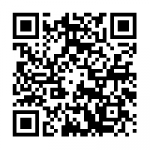Until the industrial revolution in the early 20th century, new ways of doing things seemed to evolve at a snail’s pace. Since then, technological advancements have been achieved at lightning speed. In the first 70 years of industrial design as a professional practice, new product ideas were all conceptualized by hand. Designers used traditional media like pens, pencils, markers, or paint to create beautiful hand-crafted renderings, illustrations, and technical drawings of their ideas. When the computer became accessible as a design tool in the early 1980s, everything started to change. Digital drafting and CAD software began to emerge, allowing designers to create and develop new ideas in 3D. As CAD and digital visualization tools have developed over the years, visual communication speed and fidelity of design intent has vastly improved.
Fast-forward to today, and designers have access to an array of digital tools which allow us to bring ideas to life in exciting new ways for our clients. One of the most exciting new digital tools is augmented reality (AR). This is becoming popular in E-commerce as a way for consumers to see how a product will look in their home before purchasing it. Similarly, we are able to use AR to visualize concept designs and share them with clients to be viewed at scale in a real-world environment with the desired materials and labels applied. This technology allows clients to see a design from all angles, both up close and at a distance. It provides a better understanding of intended form, and how the size, shape, materials, and labels look when placed on a retail shelf, in a pantry, or on a kitchen counter.
While designers must stick to our roots in manual hand sketching for early ideation and concept exploration, taking advantage of modern visualization technologies for refined designs is a great way to accelerate the acceptance and evaluation of a new idea to boost its speed to market.



